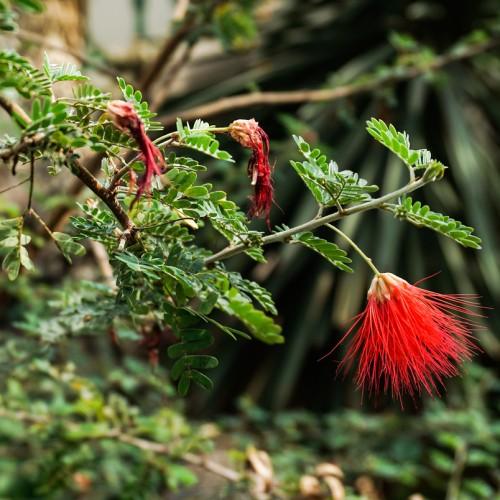
Mimosa
Albizia julibrissin
Also Known As - SilktreeCycle:
Perennial
Watering:
Average
Hardiness Zone:
6
Flowers:
Flowers
Sun:
full sun
Soil:
Well-drained
Fruits:
Fruits In Autumn Ready In Summer
Leaf:
Yes
Growth Rate:
Moderate
Maintenance:
High
Salt Tolerant:
Yes
Invasive:
Yes
Care Level:
Medium
watering
Mimosa should be watered thoroughly but infrequently. Water when the soil is dry to a depth of 1 inch and provide enough water to moisten the soil to a depth of at least 8 inches. Avoid overwatering as this can waterlog the soil and drown the roots. A general rule of thumb is to provide around 1-2 inches of water per week. In hotter, drier climates plants may need more frequent watering than those in cooler climates.
sunlight
Mimosa plants thrive in direct sunlight for a minimum of 6 to 8 hours a day to ensure they stay healthy and produce flowers. Ideally, this species should receive sun in the early morning or late afternoon as the direct sunlight during mid-day could scorch the leaves. During the summer months, Mimosa should receive full sun each day.
pruning
Mimosa (Albizia julibrissin) should be pruned in early spring, before new growth appears. The amount of pruning varies based on the age and size of the plant, but generally about 1/3 to 1/2 of the older stems can be safely removed without harming the plant. If it’s an older plant, more aggressive pruning may be required but should only be done with the advice of a horticultural expert. Other thinning maintenance pruning can be done throughout the year to help maintain the shape and size of the plant.
